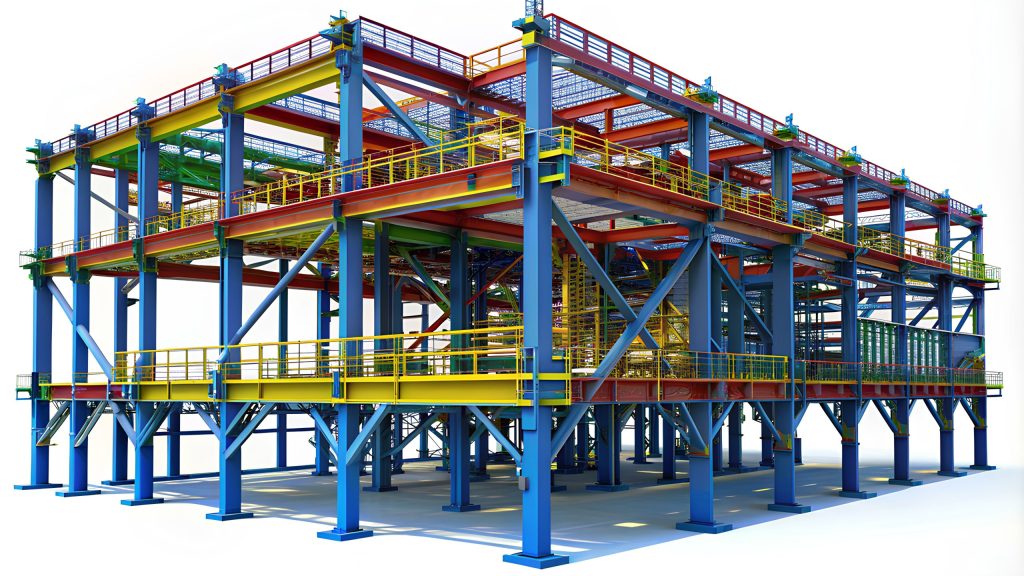
Load Case Definition
Establish and define the load cases as per project specifications to simulate real-world operational conditions.
The cradle system is a modular structure designed to carry and move heavy equipment, specifically condensers, while incorporating temporary structural components that are essential during the lifting and positioning phases. The analysis ensured that the cradle system, along with the temporary components, could safely support the condensers through all stages of movement and installation.

This study aimed to verify the structural integrity of the cradle assembly under various load conditions, with the goal of confirming that all components—both permanent and temporary—could withstand the specified operational and transit forces. The integrity of bolted connections, the impact of temporary structural components, and overall load management were key focuses of the assessment.
Murcott Energy Ltd. approached the structural assessment by applying Finite Element Analysis (FEA) using FEMAP 2406 NX Nastran software, both industry-leading tools for structural simulations. The cradle assembly was modelled with the following key considerations:
The cradle system’s interaction with temporary structural components was a critical part of the analysis. These components were used to support the structure during the movement process and were subject to significant forces. Their inclusion in the model was essential for understanding the complete system behaviour and ensuring the integrity of the entire cradle assembly during transit.

Each load case was modelled according to Eurocode 1 & 3 standards, with specific factors applied for live, dead, and variable loads, ensuring that the analysis adhered to industry best practices and safety standards.

Murcott Energy Ltd.’s structural assessment of the nuclear facility project cradle assembly demonstrated that the system, including both the cradle and temporary structural components, meets all required safety and performance standards. The FEA results confirmed that all stresses, deflections, and bolt loads were within acceptable limits, ensuring that the cradle system would perform as required during the transportation and positioning of the heavy condensers.
This detailed assessment provided the client with confidence that the cradle assembly, in combination with the temporary structural components, would safely support the condensers through all operational phases. The results also served as a valuable reference for future projects involving similar heavy-lifting and transport operations, offering insights into best practices for cradle design and structural assessment.
Murcott Energy Ltd. remains committed to providing high-quality engineering solutions that ensure the success of complex engineering projects where safety, efficiency, and reliability are paramount.
If you or your company are in need of any of our engineering solutions and expertise, please get in touch.